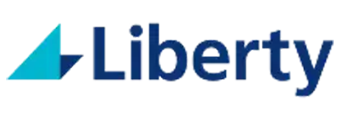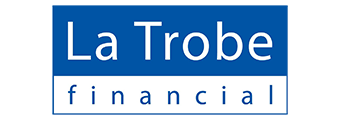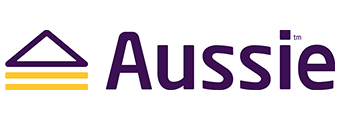Everything you need to know about low doc home loans
A low documentation (low doc) home loan is a home loan that potential borrowers can secure with less documentation than the full amount of documentation required for a standard home loan. Low doc home loans are also referred to as non-conforming loans suit borrowers who have no PAYG (pay as you go) payslip records, or cannot provide financial statements and tax returns.
Some banks may refer to low doc home loans as alt doc loans, referring to the documentation as an alternative type of documentation to the usual type of documents required.
Many people with alternative income such as self employed, casual and contract workers, don’t have the usual documentation such as pay slips and group certificates to prove their earnings. This can make it more difficult to be approved for a standard home loan.
Essentially, low doc loans are designed for people who have the income and the deposit, but lack the standard amount of proof that is necessary for a typical loan.
Low doc loans have been around since the 1990s and were introduced by non-bank lenders in an effort to provide an avenue for people who were otherwise excluded from standard loans. These loans have been welcomed by those who beforehand were unable to secure a home loan.
When applying, you still have to provide some types of proof of income, just not the same types as required for standard home loans. Nowadays, with so many people being self employed, low doc loans are more widely available and offer many more options for non-conforming borrowers. With so many options available, it makes it easier to compare low doc loans and find one that suits your needs.
It should be noted, that due to the fact that non-conforming borrowers lack the required standard of income proof, lenders will often require a higher deposit and may charge higher interest rates than those of traditional loans.
Each lender will have their own set of criteria that you will need to meet, but most will require you to provide at least two years of tax returns, business activity statements (BAS) and profit and loss statements. You can get a low doc loan at any of the major banks as well as smaller lenders such as non-bank lenders, credit unions and building societies.
How to compare low-doc home loans
There are so many variations when it comes to low doc loans, that sometimes it can be quite confusing figuring out which one to go with. It’s always best to start with the two basic comparison principles:
Interest rate
Looking at the interest rate first is a great way to begin comparing low documentation loans. Some low doc loans will offer the choice of a fixed or variable rate. Having a fixed rate will mean your interest rate is slightly higher, but you are safe in the knowledge that your repayments will remain the same throughout the fixed period. Many people choose a variable rate but you need to keep in mind that with a variable rate, you will experience fluctuations when the standard cash rate rises or falls. Some lenders will offer a split rate option which means you can split your repayments into two. One part will be variable and will fluctuate with the standard cash rate, and the other portion will remain fixed so you know how much you will be repaying on that portion.
Loan type
Some low doc loans offer the option of principal and interest or interest only. To keep your repayments low, you can select interest only but this means that you will pay off none of the principal in that time and will still owe the full amount at the end.
Loan-to-value ratio (LVR)
With low doc home loans, lenders are less likely to accept borrowers with deposits smaller than 20%. Some lenders won't allow you to borrow any more than 60% of the value of the property. Those that do will likely charge LMI.
Fees
All the standard home loan fees will usually apply to low doc home loans as well. That includes upfront fees, ongoing fees, exit fees, refinancing fees, late payment fees, and more.
Features
Low doc home loans can still come with all the usual features of a standard home loan including:
- Offset accounts
- Redraw facilities
- Split and interest-only loan options
- Additional repayments
Refinancing
Once you've taken out your mortgage, and proved you can make repayments on time, you might be able to refinance. This is an opportunity to change your low doc home loan into a regular home loan, with a lower interest rate. Keep in mind any additional refinancing fees, which will be factored into the total amount of your loan.
Difference between repayments
Principal and interest
If your repayments are made up of principal (amount you initially borrowed) and interest, this means that with every payment you are putting money towards the principal, you are paying down your loan and will be closer to paying it off. You will also be paying interest every month on the balance. The interest will reduce as you pay down your principal. Loans that are principal and interest generally have lower interest rates.
Interest only
With interest only repayments, the principal isn’t reduced at all and the interest you pay continues to be calculated during this period. This could mean that you end up paying a lot more interest over the life of your loan. Your minimum monthly repayments will only contain the interest, which means as a monthly payment the amount will be lower. Once the interest only period expires, you will be required to start paying off the principal and your monthly repayments will increase to cover this.
Different Types of Loan features
As much as the interest rate is one of the most important aspects of your new loan, there are a variety of other features you may want to look into.
1. Extra payments
Having an irregular income could mean you have some months where you have extra money that you would like to put into your loan. If this is the case, you need to find out if the loan you are considering allows extra repayments. Being able to make extra repayments will reduce your home loan quicker, therefore meaning you pay less interest over the life of your home loan. If you do select this feature, there may be a small fee or charge involved.
2. Redraw Facility
If you have made any additional repayments into your loan, a redraw facility allows you to withdraw some of that money. This may be useful if you have months where your income isn’t as steady. It’s also a good way of covering debt that is in otherwise higher interest areas such as credit cards and personal loans, as low doc loans typically have lower interest rates than the other loans.
3. Offset account
An offset account is helpful if you have extra money sitting in your everyday transaction account. When calculating how much interest you need to pay per month, the lender takes into consideration how much is in your offset account. This amount is then deducted from your principal, which leads to a lower monthly interest repayment.
Many times, you will only find offset accounts paired with variable rates.
4. Flexible repayments
Many home loans allow you to choose how often you would like to make your repayments so you aren’t locked into only making one monthly payment. It might suit you better to pay weekly or fortnightly.
How do I apply for a low-doc home loan?
Applying for a low doc loan is similar to applying for a regular home loan. It can usually be done online, over the phone or at a bank branch if you prefer to do it face to face. If you have all your documents ready before you start, it will make the process a lot easier to apply and will move your approval along quicker than if you are unprepared.
Each lender has their own criteria, so make sure to find out what your lender will need. Sometimes, people find it tricky trying to deal with banks or lenders. If you feel you need extra help, you can enlist the services of a mortgage broker. Mortgage brokers are specialists in non-conforming loans and could potentially help you find a better loan than you could find for yourself.
Brokers receive a commission from banks and untraditional lenders, so you don’t need to pay them out of your pocket. Each bank has a slightly different process for applying for a low documentation home loan, however the basics are similar.
Once you have compared low doc loans and have decided to apply, you will need to provide the following documentation:
- Proof of identification
- Proof you’ve been working in the same industry for at least 12 months
- An ABN
- Registered business name
- At least 12 months of lodged business activity statements (BAS)
- Proof of registration of GST
- Personal bank statements
- Business bank statements
- A declaration from your accountant verifying your income
Who is eligible for a low doc home loan?
Individuals who apply for a low doc home loan are often self-employed, freelancers, small business owners, or investors who can't provide payslips, financial statements, or tax returns as evidence of income.
Eligibility requirements will likely vary from lender to lender, but in most cases you will be required to have an ABN, a good credit history, and show you can afford to make repayments.
What documents are required for a low doc home loan?
When applying for a low doc home loan, applicants might need to provide the following:
- Business Activity Statements (BAS) from the past 12 months
- An Australian Business Number (ABN) and/or GST registration
- Business Account transaction statements
- Accountant's letter
- Personal tax returns
What are the main differences between low doc loans and standard home loans?
The most obvious difference is that you don’t require as much documentation for a low doc loan as you do for a standard home loan.
A low doc loan will therefore have slightly higher interest rates than a traditional loan.
Another important difference between low and full doc loans Is that you will be required to pay a larger deposit for your low doc loan.
The final key difference between low doc and standard home loans is the maximum amount you can borrow. With a low doc home loan you may find that the maximum loan amount is lower than that of a standard loan.
What are the main differences between low doc loans and no doc loans?
A low doc loan, is not a no documentation loan.
While a low doc loan requires less documentation of regular income and assets that outweigh liabilities in the eyes of a lender, a no doc loan requires no documentation. The major four banks along with many alternative lenders, no longer offer no doc loans.
The lending criteria for no doc loans include:
No income evidence
While you don’t need tax returns, BAS statements, or bank account statements to verify your income, some lenders still require you to sign a statement of your assets and liabilities or a declaration that confirms that you can afford the loan.
Loan purpose
Your loan must meet one of the below criteria:
- Your loan must be for business purposes
- Your loan must be secured by a commercial property
- Your loan must be for investment purposes (not residential property)
- Your loan must be in the name of a company or trust with an ABN
Security
The lender will require you to have sufficient security. The property they are taking as security
must be:
- In a good location.
- In good condition.
- Larger than 50m2 for a unit or under 2 hectares for land.
- Readily saleable.
- Residential properties, offices, factories, warehouses and retail may be acceptable for a commercial no doc.
Credit history
Some lender still require you to have a good credit history. While there are lenders who will approve a no doc loan for someone with an impaired credit history, this isn’t the case for all lenders. One thing is for sure, bad your credit history, will require you to pay a higher interest rate if approved.
Exit strategy
No doc loans are for short periods of time: six months to three years. If you do not have an exit strategy for the required period of time, you will likely be rejected. Lenders want to know how the borrower plans to sell the property or another asset to repay the loan.
This compares with low doc requirements as such:
- Borrower should have a clean credit history.
- To avoid Lender’s Mortgage Insurance (LMI), you will generally only be able to borrow a maximum of 60%.
- Full property valuations.
- No second mortgage on the property.
- Self-employed for at least 1 year (some lenders require 2 years).
How much deposit will I need for a low doc home loan?
If you are applying for a low doc loan, it is because you don’t have a regular income and therefore pose a risk to the lenders. Due to this, you generally cannot borrow more than 80% of the property’s value. In addition, Lenders Mortgage Insurance (LMI) will apply to any loan with a LVR higher than 60%. Keep in mind, some lenders may offer a low doc home loan with the maximum 90-95% LVR, so do your research and see what suits your situation best.
If you have an LVR of 60% or below and you would like to apply for a low doc loan, you will need to have had your ABN registered for more than 1 year. You will also need to be registered for GST if your earnings are over $75,000.
Which lenders offer low doc home loans?
There are many lenders that offer low doc home loans. These include banks, credit unions, building societies and other non-bank lenders. Below are just a handful of lenders which offer a low doc home loan. Each lender has their own lending criteria and fees, so always do your research before deciding on a lender.
CBA
The Commonwealth Bank has a selection of low doc home loans. These include a standard variable or fixed rate home loan, basic variable rate home loan and a line of credit (LOC) home loan.
Rams
RAMS is a non-bank lender. They offer three low doc home loans options: fixed rate home loan, variable rate home loan (with redraw) and a line of credit.
Westpac
Like most of the big banks, Westpac provides a standard variable rate low doc home, an investment home loan and a line of credit. You can also access some discounts on fees and rates by paying for their annual Premier Advantage Package
St. George
St.George offers fixed rate, variable and equity loans for low doc borrowers. You can also have access to a 100% offset account.
Can I refinance my low doc home loan?
Low doc loans can be refinanced, however refinancing usually means reapplying for a whole new loan and waiting for approval. If your purpose of refinancing is to get a better interest rate, it is worthwhile speaking to your lender and asking if they can offer a better rate before you start an entirely new, time consuming application somewhere else.
Advantages and disadvantages of low doc loan
As with any loan, there are advantages and disadvantages.
Advantages:
- Possibility to get a home loan even if your income isn’t received on a regular basis. This is beneficial for self employed, casual workers, contract workers and investment owners.
- Less documentation required to be approved.
- Variety of loan options. Much like standard loans, you could opt for a fixed or variable rate and also benefit from features such as redraw and offset account.
Disadvantages:
- Higher rates due to your higher risk of unsteady income.
- May require a larger deposit.
- You may be subject to more fees and charges than that of a standard loan.
Low doc personal loans
Low doc loans cover more than mortgages. Oftentimes, a personal loan is required by small business owners and the self-employed to cover operational expenses. Like low doc home loans, low doc personal loans are for those who may have difficulty being approved for a standard loan based on a lender’s risk return model.
Many lenders offer self-employed personal loans: secured and unsecured loans. A secured personal loan is a loan secured against something that you own, such as your car or house. An unsecured personal loan is where the lender agrees to lend you money without taking a form of security, subject to your capacity to repay.
Glossary of Terms
| Application fee | the fee paid to a lender to set up a home loan. |
|---|---|
| Appraisal fee | the fee charged to gain a professional opinion about how much a property is worth. |
| Comparison rate | all fees charges and payments in one rate reflecting the total annual cost of the loan. |
| Credit Rating | the credit-worthiness of individuals and corporations, based on their borrowing and repayment history. |
| Credit report | a report from an authorised agency that shows the potential borrowers credit history which lenders will assess when deciding to approve a loan. |
| Debt consolidation | when a borrower rolls multiple loans into a single one. |
| Extra repayments | loans that allow you to make extra payments earlier than what is required. These are usually only available with variable loans. |
| Fixed rate Home Loan | a locked in interest rate for a particular period of time. |
| Interest-only loan | no principal repayments required on a home loan; the borrower pays the interest portion of the loan only. |
| Lenders Mortgage Insurance (LMI) | Insurance that a lender takes out in case of default from the borrower. Generally required for home loans with an LVR of over 80%. |
| Low-doc home loan | low documentation loans are designed for the self-employed, or those who will struggle to gather the documentation required to get traditional home loans. These loans usually carry higher interest rates and require LMI. |
| LVR | "Loan to Value Ratio," is the maximum proportion of the value of your home that can be loaned out to you. |
| No Deposit Home Loan | A no deposit home loan allows you to borrow the full purchase price of a property without saving for a deposit. |
| Non-conforming loan | home loans for people who do not meet the standard criteria for traditional home loans, could be self-employed. |
| Offset account | Accounts that offset taxable income against interest paid on mortgage repayments. |
| Principal repayment | repayments toward the original loan amount, rather than interest on the loan. |
| RBA cash rate | the overnight interest rate that the Reserve Bank of Australia offers institutions to settle-up on inter-bank transactions. |
| Refinancing | Paying off an existing loan and establishing a new one. |
| Split Loans | a predetermined portion of your home loan is locked in at a fixed interest rate, the other portion is a variable rate of interest. |
| Switching | changing from one product to another: variable to fixed or fixed to variable to another. |
| Variable rate | a home loan interest rate that fluctuates according to the official cash rate set by the Reserve Bank of Australia. |






